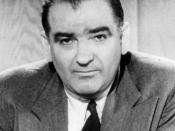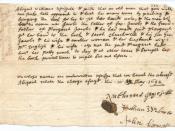Nicolas Hytner has used a number of techniques such as camera angles, dialogue and music to represent gender through the film version of Arthur Miller's The Crucible. This is evident through the study of the characters John Proctor, Reverend Hale, Judge Danforth, Elizabeth Proctor and Abigail Williams.
The film is set in the mid 17th century in the Puritan society of Salem. The Puritans are a group of people who take the Bible literally and very seriously. Law and religion was tied together so that sin became crime and visa versa. Salem was a place where pleasure and relaxation of any sort was restricted and people lived under rigid Puritan constraints that allowed no room for privacy. All power within the society was derived from biblical authority and the patriarchal views of Salem, thus the society was led by ministers of religion and the patriarchs, with women as the third class citizen.
Miller, reflecting his own 1953 context, is paralleling the Salem witch-hunt with the infamous drive by Senator Joseph McCarthy to expose 'radicals' and 'communists' in the USA. Clearly, the term "witch hunt" has come to mean the slandering of innocent people using them as scapegoats for the things that are wrong in society. Discrimination against Muslims during the recent Gulf War and War on Terrorism illustrates the universality of the issue of witch-hunting.
With the context in mind, the representation of gender in Salem can be analysed. The tragic hero of the film, John Proctor, is presented as a stereotypical man of the late 1600s Salem. John is presented by Hytner as very much the moral centre of the film through the use of a variety of filmic techniques in the construction of his character. In the first scene he appears, his clothes are natural and earthy in...



Films
Nice essay!
2 out of 2 people found this comment useful.